#B2BSoftware
Explore tagged Tumblr posts
Text
10 Signs Engineering & Industrial Goods Business Need Accounting Software
Imagine, you’ve just completed a big order. Your factory is running at full speed, purchase orders are coming in, and customers are calling for new quotes. Your team is busy, your warehouse is stocked, and sales look promising. But then, the month ends. You sit down with your accountant and ask the big question:
“Are we making a profit?”
The response? A hesitant, “We’re not sure yet. We’ll know once we update the sheets”
Sounds familiar?
Engineering and industrial businesses deal with long wait times, multiple raw materials, complex costs, and tight profit margins. Yet, many still rely on spreadsheets, files, and WhatsApp messages to manage everything. Here are 10 clear signs, it’s time to switch to accounting software before small issues turn into major problems.

10 Signs you need an accounting software
1. You Can’t Get Real-Time Numbers Every time you need to know how much cash is in the bank, what your sales were this month, or how much stock is left, you have to ask someone or dig through files. This delay poses a risk, leading to slower decision-making and potential cash flow mismanagement.
Solution: Accounting software provides instant dashboards displaying sales, expenses, and inventory in one place. With real-time data at your fingertips, there’s no waiting and no uncertainty.
2. You’re Guessing Costs, Not Calculating Them Instead of calculating costs accurately, you rely on rough estimates when pricing products or jobs. However, raw material rates, labor costs, and overhead expenses are constantly changing, which can lead to unexpected losses.
Solution: Real-time job-wise or product-wise costing. By tracking the exact cost of each part, product, or project, you gain clear insight into profitability and can make informed pricing decisions.
3. Inventory Shortages Slow You Down Running out of critical components at the worst times can lead to missed deliveries, while slow-moving stock takes up valuable warehouse space and ties up cash. Without proper tracking, managing inventory becomes a constant struggle.
Solution: Real-time inventory tracking with automated reorder alerts. This ensures you always have the right stock at the right time, preventing last-minute shortages and excess stockpiling.
4. You’re Losing Track of Payables & Receivables When customers delay payments and vendors chase you for overdue invoices, it’s easy to lose track of who owes what. Without a clear system, cash flow suffers, late fees add up, and supplier relationships can be strained.
Solution: Accounting software helps track every bill and invoice. With automated payment reminders and aging reports, you stay on top of due dates and ensure no money is lost due to poor follow-up.
5. GST Filing Is Always a Last-Minute Rush
Manually matching invoices, entering HSN codes, and correcting errors right before the tax deadline creates unnecessary stress and increases the risk of compliance issues and penalties. Manual tax preparation can be time-consuming and error-prone.
Solution: GST-ready software that automates the process by generating compliant invoices, tax reports and supporting e-invoices. This streamlines compliance, reduces errors, and saves valuable time.
6. You Still Depend on a Single Accountant or Team Member
Relying on an accountant or bookkeeper to manage accounts creates a major risk. If they become unavailable, resign, or misplace important data, business operations can come to a halt.
Solution: Cloud-based accounting system keeps all financial data centralized, securely backed up, and accessible anytime. Whether from your office or phone, you stay in control and ensure seamless business continuity.
7. Your Business Has Grown—But Systems Haven’t As your business grows with more orders, machines, and employees, relying on manual entries and Excel trackers becomes inefficient and unsustainable. Managing operations this way slows down processes and increases the risk of errors.
Solution: Scalable software that grows with your business. It allows you to add users, define roles, track multiple branches, and automate tasks, ensuring smooth operations as you expand.
8. Manual Billing & PO Generation Takes Too Long
Manually creating invoices, purchase orders, and delivery challans increases the risk of errors. This not only wastes time but leads to billing inaccuracies, delays, and potential compliance issues.
Solution: Pre-built templates and automated invoicing, which streamline documentation, eliminate mistakes, and save valuable time
9. You Don’t Know What’s Truly Profitable
Without proper tracking, it’s hard to see which jobs are truly profitable. One may generate high revenue, another may be more efficient, and a third may have hidden costs from subcontracting and rework—yet none of this is clearly measured.
Solution: Detailed profit report by product, client, project, or job card. This gives you the insights needed to scale what works and fix what doesn’t, ensuring smarter business decisions.
10. You're Always Reacting instead of Planning Constantly dealing with urgent issues like chasing payments, managing stockouts, or tracking missing funds keeps you stuck in reactive mode. Without a clear system, planning takes a backseat to daily crises.
Solution: Automated reporting and forecasting, which provide real-time insights to help you plan purchases, manage cash flow, and drive growth proactively, so you stay ahead instead of always catching up.
How KOKA Books Accounting Software Solves These Problems
Despite having a solid business with machines, manpower, and expertise, Without financial clarity it’s like running a factory with no control panel—costs leak, margins shrink, and decisions become guesswork.
That’s where KOKA Books Accounting Software comes in.
Customized for engineering & industrial goods businesses, KOKA Books-Accounting Software helps you:
- Track real-time cash flow – See exactly where your money is going.
- GST compliance – No more last-minute tax hassles.
- Manage inventory & job costing – Prevent stockouts and ensure profitable pricing.
- Streamline invoicing & payments – Never miss a due date or pending payment.
Ready to take control of your finances? Try KOKA Books today!
Conclusion:
The problem isn’t your business model. The problem is running a complex operation without the right tools.
Accounting software isn’t about automation, it’s about control, confidence, and clarity. If you found yourself relating to even three or four of these challenges, it’s a clear sign that it’s time to upgrade and take charge of your business with the right tools.
#EngineeringBusiness#IndustrialGoods#AccountingSoftware#BusinessGrowth#SMBAccounting#ManufacturingBusiness#InventoryManagement#BusinessAutomation#ERPSoftware#FinanceManagement#B2BSoftware
0 notes
Text
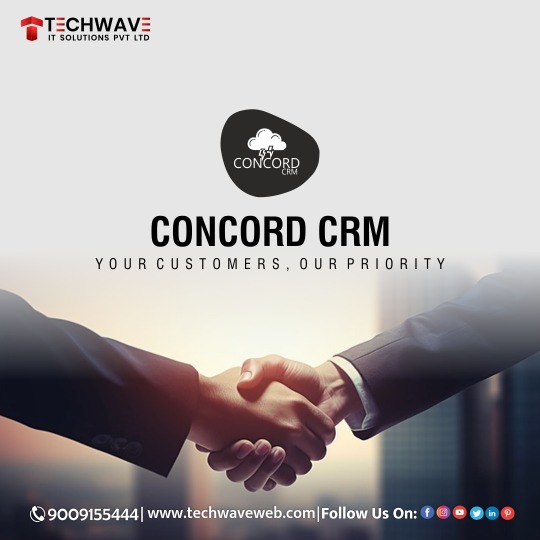
All-in-One CRM for Modern Sales Teams!
Contact us today for Booking a Free Demo Today-
Call Now: +919009155444
Visit: https://concorderp.com/
#WorkSmarter#BoostProductivity#SalesEfficiency#StreamlineWorkflow#SalesOptimization#MarketingAutomation#LeadGeneration#SellSmarter#ConcordCRM#SimplifySales#GrowYourBusiness#SuccessStartsHere#FutureOfSales#CloudCRM#B2BSoftware#DigitalTransformation
0 notes
Text
The Guide to Reducing Complexity in Software Development
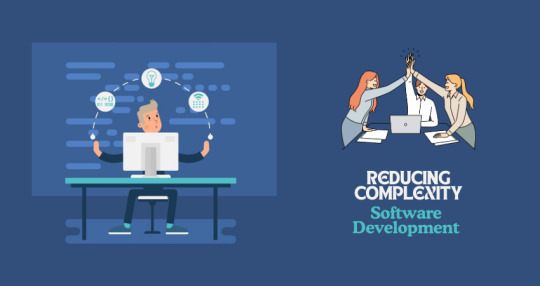
In the ever-evolving field of software development, complexity has become inevitable. Modern software projects frequently incorporate various technologies, interconnected systems, and sophisticated user requirements. Effectively managing this complexity is essential for delivering solutions that are efficient, scalable, and reliable. For a B2B-focused No 1 software development company in Dubai, reducing complexity in the development process is not just an efficiency strategy; it's an approach that can significantly enhance project timelines, reduce costs, and improve customer satisfaction. This blog will explore effective best practices for managing and reducing complexity in software development, benefiting companies seeking customized software solutions in industries ranging from finance to manufacturing. We’ll also look at the role of AI and ML in development as key tools in simplifying the most intricate development challenges.
Understanding Complexity in Software Development
Software development complexity can arise from multiple factors:
System Requirements: Intricate user requirements and business rules increase development complexity.
Technological Integration: Combining legacy systems with modern technologies can create complex dependency issues.
Team Coordination: Large development teams, often working in distributed environments, can lead to communication gaps and project delays.
Constant Evolution: The continuous advancement in technologies like AI, ML, and cloud computing adds layers of complexity to project requirements.
For businesses looking to achieve simplicity, understanding the root causes of complexity is the first step. Without a proactive strategy to manage these aspects, a software project can become challenging to navigate.
Best Practices for Reducing Complexity
1. Adopt a Modular Development Approach
Modularity breaks down a project into independent components that can be developed and tested individually. This approach is beneficial for several reasons:
Improved Maintainability: Modular components are easier to maintain and update over time.
Parallel Development: Different teams can work on separate modules simultaneously, reducing development time.
Enhanced Flexibility: Modular systems allow for easier integration of new technologies, including AI and ML, without disrupting the entire system.
For B2B clients, modular development can be a critical differentiator, allowing them to adapt quickly to changes in their business environment. Modules can be optimized, tested, and updated independently, making the overall system more agile.
2. Prioritize Clear Communication and Documentation
Communication issues can significantly contribute to development complexity. Establishing well-documented communication processes is crucial, especially when working with clients who require customized software solutions:
Detailed Requirement Documentation: Start with thorough documentation of client requirements, objectives, and expectations. Avoid vague requirements that lead to misinterpretations.
Regular Updates and Feedback Loops: Keep the client involved with regular updates to ensure that the development is aligned with their needs.
Cross-functional Documentation: When AI and ML models are involved, creating cross-functional documentation ensures that developers, data scientists, and end-users have a shared understanding of the system.
By investing in effective documentation and communication strategies, companies can avoid misalignment and reduce the need for rework, thereby minimizing complexity.
3. Use Agile Methodologies
For many software development companies, Agile methodologies offer a structured yet flexible way to manage complexity. Agile encourages iterative development, where the project is broken into small, manageable sprints, each focused on a specific aspect of the software:
Continuous Feedback and Adaptation: Agile involves the client at each sprint, ensuring that the development is in line with their expectations.
Incremental Improvements: Agile allows for incremental improvements to the software, reducing the risk of major issues toward the end of the project.
Enhanced Collaboration: Agile promotes close collaboration within the team, reducing the chances of miscommunication and error.
Agile can be particularly advantageous in projects involving AI and ML in software development in UAE, where testing models iteratively ensures accuracy and relevance.
4. Leverage Automation for Routine Tasks
Automation can significantly reduce the manual effort required in repetitive tasks, such as testing, code reviews, and deployment:
Automated Testing: Automated tests can catch bugs early in the development lifecycle, minimizing costly fixes down the line. Automated unit, integration, and regression tests are essential for complex software projects.
CI/CD Pipelines: Continuous integration and continuous deployment (CI/CD) pipelines streamline the build and deployment process, reducing the potential for human error.
Automated Code Reviews: Automated tools can quickly identify code quality issues, ensuring compliance with best practices and reducing rework time.
Automation can boost productivity, especially in AI and ML projects where data handling, preprocessing, and model validation often require repetitive steps. By automating these, teams can focus on higher-value tasks, ultimately reducing project complexity.
5. Implement AI-Driven Analytics for Project Management
AI-driven analytics can provide real-time insights into development processes, identifying potential bottlenecks and optimizing resource allocation. For B2B clients, this results in more predictable delivery schedules and improved project management:
Data-Driven Decision Making: AI-driven analytics provide objective data on project timelines, allowing managers to make more informed decisions.
Predictive Analytics for Risk Management: AI models can identify patterns from previous projects, predicting risks and suggesting preventive measures.
Resource Optimization: AI can help in allocating resources effectively, ensuring that each aspect of the project is adequately staffed and resourced.
Incorporating AI and ML in development can improve project accuracy and predictability, key factors for successful B2B partnerships.
6. Simplify the Technology Stack
A bloated technology stack can make development and maintenance overly complex. Adopting a lean technology stack is essential, particularly when working with clients who require customized solutions:
Choose Reliable, Proven Technologies: Stick with technologies that are known for their stability, compatibility, and community support.
Avoid Unnecessary Tools: Each tool should add measurable value. Introducing unnecessary tools only complicates the process and increases maintenance efforts.
Ensure Compatibility: If the software needs to integrate with existing systems, ensure that the chosen technologies are compatible with the client's infrastructure.
By optimizing the technology stack, software development companies can reduce integration issues and simplify development, ensuring faster and more reliable solutions for clients.
7. Incorporate Code Reviews and Refactoring
Code reviews and refactoring are essential for maintaining code quality and reducing long-term complexity:
Regular Code Reviews: Conduct code reviews frequently to identify potential issues early. These reviews also ensure that the code adheres to the company’s standards and best practices.
Continuous Refactoring: Code refactoring improves the design of existing code without changing its functionality, making it easier to manage and scale. This is especially important for long-term projects where code updates are frequent.
For clients requiring customized software solutions, well-maintained code results in better performance, fewer bugs, and reduced costs for future upgrades.
8. Focus on User-Centered Design (UCD)
Complexity often arises from software that doesn’t meet the real needs of end-users. Implementing User-Centered Design (UCD) helps create software that is intuitive and aligned with user expectations:
User Research and Personas: Conduct research to understand end-users' pain points, workflows, and preferences, creating personas to guide development.
Continuous Testing with Users: Testing prototypes with actual users helps ensure the software is effective and straightforward to use.
Simple, Intuitive Interfaces: Prioritize simplicity in the UI/UX design to ensure that users can navigate the software easily without extensive training.
By aligning with end-user needs, software development companies can reduce complexity in usage and adoption, ensuring the client receives a product that is easy to use and manage.
9. Invest in Skilled Talent
Complex projects require developers with expertise in various fields, such as AI, ML, cloud computing, and cybersecurity. Hiring top developers with the right skills can make a significant difference in managing complexity:
Cross-Functional Expertise: Look for developers with experience across multiple areas, as they can bridge gaps between different technologies and streamline integrations.
Effective Problem Solvers: Skilled developers can find creative solutions to complex problems, making it easier to keep the project on track.
Focus on Training and Development: Regular training sessions ensure that your team is up-to-date with the latest best practices and technologies, allowing them to apply innovative solutions to reduce complexity.
Hiring and retaining a team of talented professionals is one of the best investments a software development company can make toward reducing project complexity.
10. Monitor and Evaluate Post-Deployment
Once the software is live, complexity can arise from unanticipated usage patterns, scalability issues, and performance bottlenecks. Post-deployment monitoring and evaluation ensure that the software continues to meet the client’s needs:
Performance Monitoring: Tools like application performance monitoring (APM) can provide real-time insights into how the software performs in a live environment.
User Feedback Loops: Collect feedback from users to identify any issues or additional requirements that may arise post-launch.
Proactive Maintenance: Regularly update and maintain the software to prevent potential issues and optimize performance.
By adopting a robust post-deployment strategy, companies can reduce the likelihood of complex issues surfacing after release, providing long-term value for their clients.
Conclusion
Reducing complexity in software development is essential for delivering high-quality kYC solutions that meet client expectations in a timely and efficient manner. Companies can effectively simplify complex projects by adopting a modular approach, utilizing automation, focusing on user-centered design, and leveraging AI and ML in development. These best practices streamline development processes and ensure that B2B clients receive robust, scalable, and user-friendly solutions tailored to their needs. By prioritizing simplicity, software development companies can build long-lasting partnerships with their clients and establish themselves as reliable providers of customized software solutions in a competitive market.
#SoftwareDevelopment#TopDevelopers#TechSolutions#AIAndML#B2BSoftware#developers#ai software development#hiring software developers#techinnovation
0 notes
Text
what is saas? #SaaS SaaS stands for Software as a Service. It's a software distribution model where applications are hosted by a service provider and made available to customers over the internet. Instead of downloading and installing software on individual computers or servers, users can access the software via a web browser. SaaS applications are typically paid for on a subscription basis, and the provider handles maintenance, updates, and security.
Examples of SaaS include applications like Google Workspace (formerly G Suite), Salesforce, Dropbox, and Slack, among many others. This model has become increasingly popular due to its scalability, accessibility, and cost-effectiveness for businesses and individuals alike.
#SaaS#SoftwareasaService#CloudComputing#DigitalTransformation#BusinessSoftware#EnterpriseSolutions#CRMSoftware#MarketingAutomation#CustomerSuccess#SubscriptionModel#CloudServices#B2BSoftware#SaaSProduct#StartupSaaS#TechInnovation#DataSecurity#AIinSaaS#CollaborationTools#SaaSProvider#ProductivityTools
1 note
·
View note
Text
Maximize Sales Success: Selling B2B Software

Empower your B2B software sales skills with our dedicated course on Selling B2B Software. Discover effective strategies, tactics, and industry insights crafted specifically for the B2B landscape. Enroll now to elevate your sales performance and achieve greater success!
0 notes
Text
Sysaler's Reverse Auction Software
Sysaler Auction software is designed to simplify procurement-related processes- B2B space, both for buyers and sellers Turn your procurement process into a savings generator and efficiency driver with sysaler procurement software To know more about e-auction related services, visit our website: https://www.sysaler.com
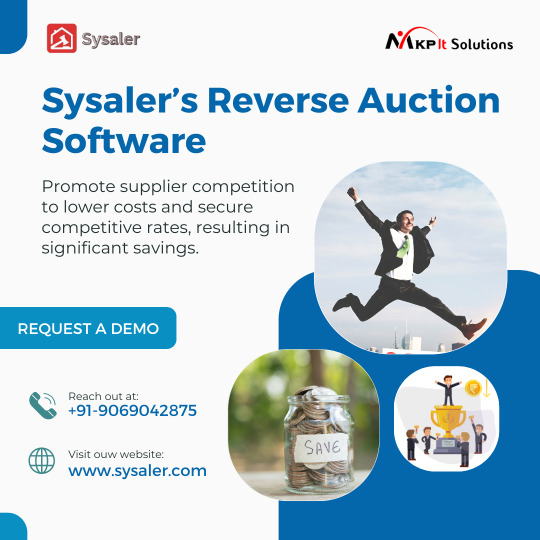
#sysaler#eauction#procurement#enegotiations#cloudbasedsolutions#cloudbasedsoftware#procurementprocess#businesssupport#b2b#auction#B2BSoftware#ForwardAuction#eprocurementprocess#e_sourcing#sourcetopay#automation#software#supplychain#smallbusiness#technology#quality#sourcing#ProcurementTips
0 notes
Text
dipanshutech is the Laravel B2B and enterprise solutions

#Laravel#B2BSolutions#EnterpriseSolutions#B2BTechnology#BusinessSolutions#LaravelDevelopment#WebDevelopment#DigitalTransformation#TechInnovation#B2BSoftware#EnterpriseTech#LaravelEnterprise#BusinessTech#LaravelFramework#SoftwareDevelopment#TechSolutions#B2BIntegration#EnterpriseDevelopment#B2BApps#TechConsulting
0 notes
Text
Upgrade your business with B2B Inventory Management Software.
Boost your business with top-notch B2B Inventory Management Software! 🚀📊 Simplify, organize, and thrive effortlessly. 💼✨ Say goodbye to inventory hassles and hello to smooth operations! 💻🔧
Read More : https://www.inventcolabssoftware.com/blog/the-art-of-mastering-b2b-inventory-management-software-development/

#B2BSoftware#InventoryManagement#BusinessSolutions#EfficiencyBoost#BusinessGrowth#SmartBusiness#DigitalTransformation#appdevelopment
0 notes
Text



Tired of managing bookings manually? Try our smart Home🏠 Services Software—designed to simplify, schedule, and scale your business. Easy to use. Made for Jaipur pros.
📞Call: 7297026119 📨[email protected] . . .
#sevenunique#Jaipur#homeservices#fieldservice#technicianapp#crmsoftware#jobmanagement#workorders#smartbusiness#localbusiness#invoicesolutions#servicetech#smallbiztools#automationtools#businessgrowth#digitaltools#onlinescheduling#fieldmanagement#jobtracker#timesaver#b2bsoftware
0 notes
Text
B2B & B2C Partner
All Type Fintech services like: AEPS, DMT, recharge, Bill Payment, Loan, Insurance, b2B Service, Whitelabel, reseller panel, Bbps, UPI/QR, Software & Application Development services result in tailored and easy-to-evolve solutions for automated financial service delivery.

#rrfinco #rrfinpay #b2bservice #whitelabelservice #resellerservices #b2bsoftware #whitelabelsoftware #b2bSoftwareCompany #whitelabelSoftwareCompany
#aeps #appserviceprovider #aepsservice #top10aepsservice #fintech #fintechservice #softwarecompany #rechargesoftware #dmt #bbps #billpayment #pancard #giftcard #fasttag #insurance #dthrecharge #mobilerecharge #whitelabelSoftware #b2bsoftware #resellersoftware #b2bservice #whitelabelservice #mobileapplication #gameapplication #loan #DematAccountOpening #PayLICpremium #softwarecompany #websitecompany #softwaredevelopmentCompany #fintechsoftware #b2bsoftware #whitelabelsoftware #mlmsoftware #mlmsoftwaredevelopment #b2bsoftwaredevelopment #fintechsoftwaredevelopment #AePS #dmt #aepsservice #apes #upi #loan #loanservices #Payment #paymentgateway #eGoverment #travels #insurance #insurancecoverage #DTHrecharge #mobilerecharge #billpayments #Adharpay #paymentgateway #paymentsolutions #CMS #HotelBookings #ticketbookings #API
#account opening#aeps software#gst services#api solution#api integration#recharge software#loan service#dmt software#b2b service#b2c services#whitelabel software development#white label services#white label agency#white label solution#whitelabel service#bill payment software#best aeps service provider#bill payment#b2b lead generation#e commerce software#software company#mlm software
0 notes
Photo

Make your festival special with usThis Diwali joins us and start your B2B business with Rainet. Great Festival 70%OFF Sale Get Amazing Additional services in our software.
AEPS Recharge DMT services Get the best Company in Noida.
#rainettechnology#clickncash#resellersoftware#microatm#mobile recharge#bbps#aeps#whitelabel#software#b2b#business#b2bsoftware#diwali2021#festivevibes#BestServiceProvider#bestchallenge#diwalideal#discountoffer#AmazonGreatIndianFestival#Dipawalioffer#diwalioffer
1 note
·
View note
Text
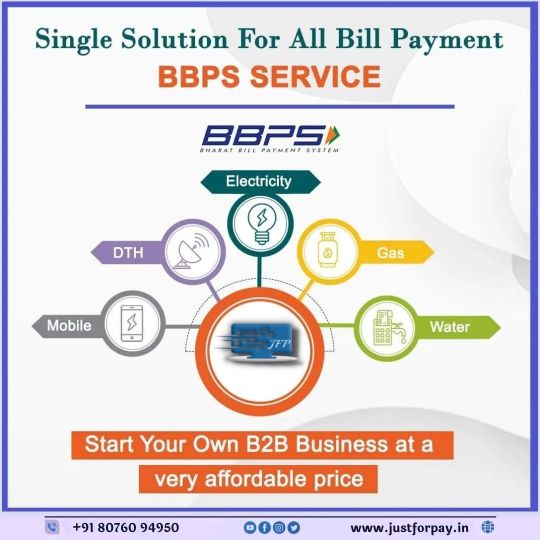
Get Any API & B2B Software Portal at very affordable Price.
Discover more about BBPS API -> www.justforpay.in
#linkinstory

#justforpay##API##pancardapi##aepsapi###kyc#software#API#apiservice#business#NPCI#RBI#banking#India#fintech#fintechservice#fintechinnovation#bbpsapi#bbpsservice
1 note
·
View note
Text
Legal Research Database Provider | Headsof
The Legal Research Database contains a range of legal resources, including case law, legislation, journal articles, and more. It is designed to be user-friendly and easy to use, with a simple search interface that allows users to find the resources they need quickly and easily.
#Legal Research Database#legal research#databases#united kingdom#london#Headsof#Database providers#b2bsoftware#b2b data list provider#business contact database uk#business lists uk
0 notes
Text

Launch your business during festive season with Omega Softwares #AEPS #BBPS #moneytransfers #mobileapps #website #ecommerce
0 notes
Link
#b2b travel portal#b2bbookingengine#b2bbookingsoftware#b2b#b2bsoftware#b2bbookingsystem#B2BBooking#b2b travel portal development#b2b travel booking portal#b2b travel booking#travel technology#Travel Technology Company#Travel Technology Solutions#travelindustry#travel business#travel#Travel Agent#travel software
0 notes
Photo
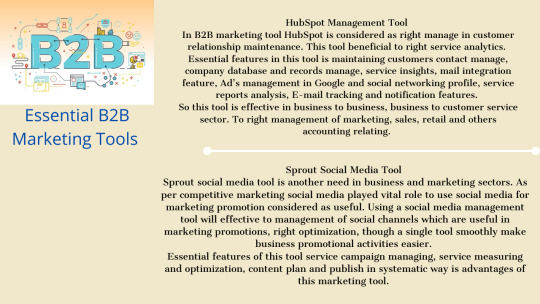
B2B marketing is required for gain more service leads and customers for business to business based service sectors. For gain more service or products selling, service developments right marketing strategies, B2B marketing tools is also playing key role in this B2B sector.
#b2bservices#b2b website#b2bsoftware#digitalmarketingservices#webdesiognservices#webdesignservicesindelhi
0 notes